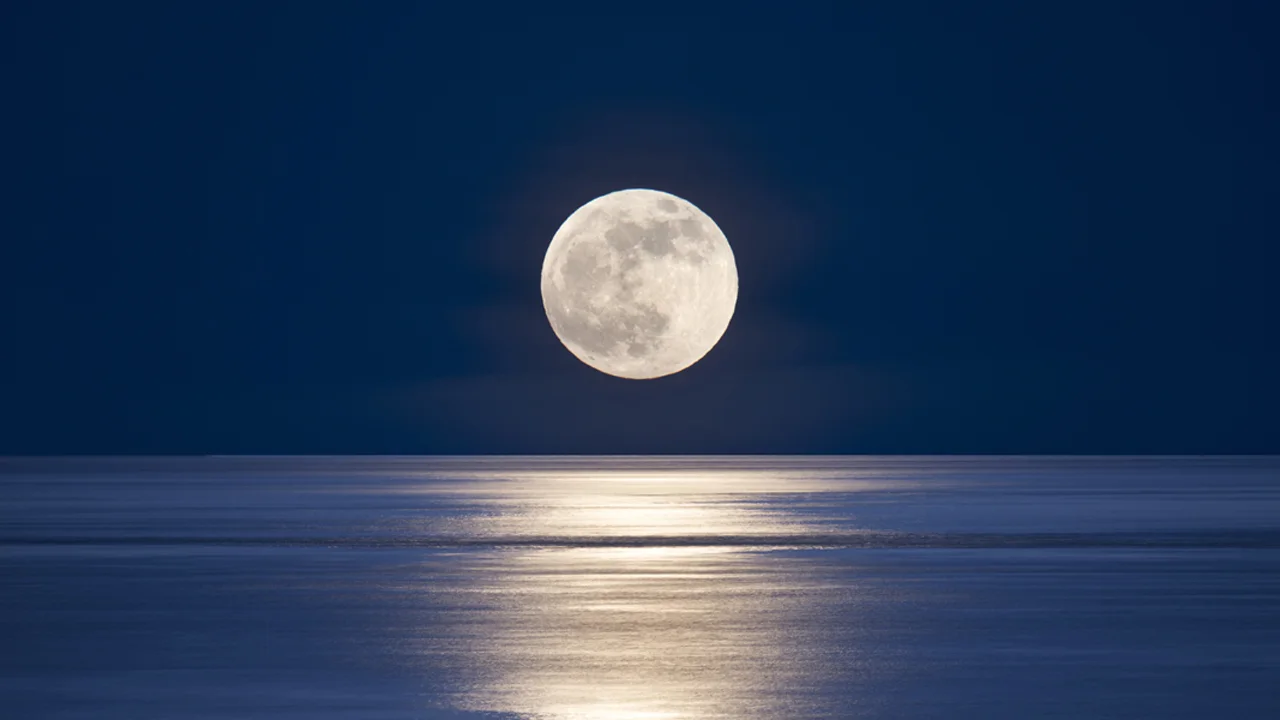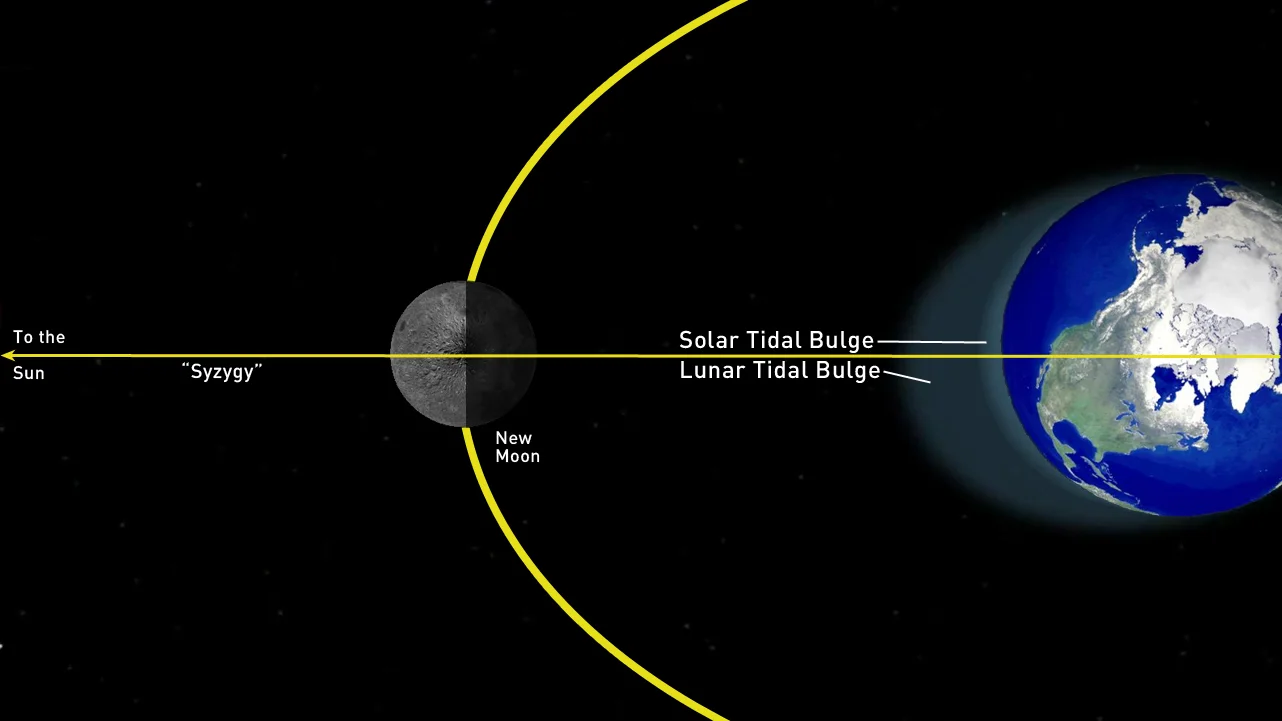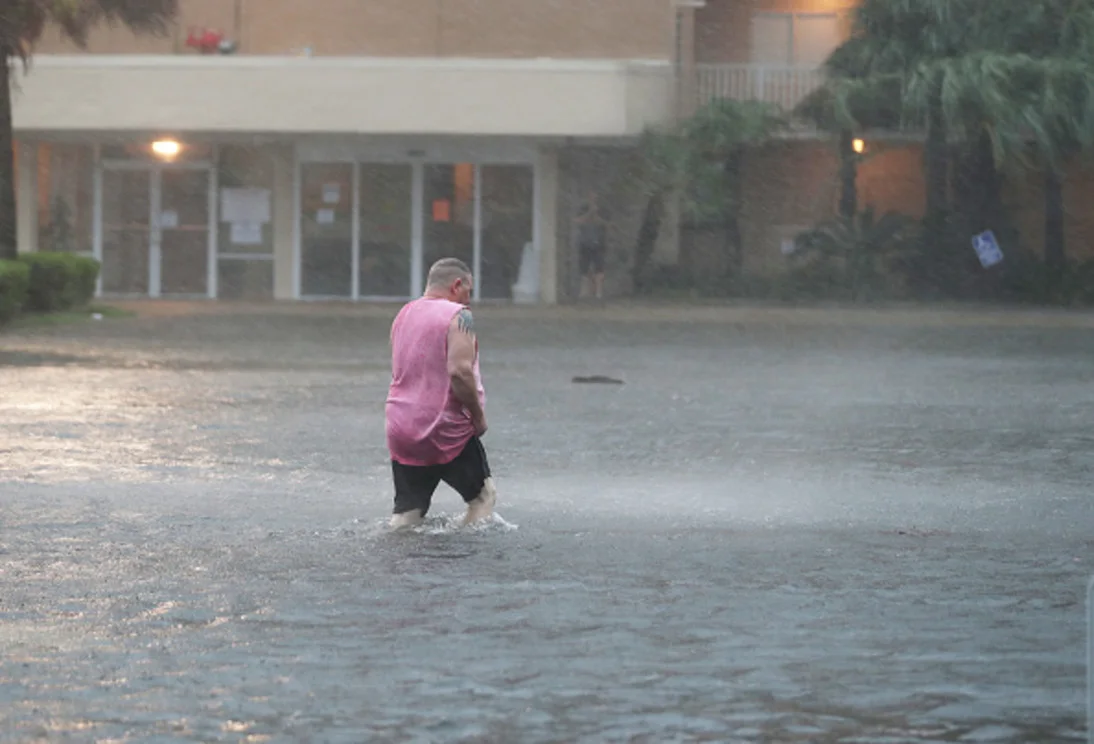
Moon ‘wobble’ will amplify devastating coastal flooding by mid-2030s, says NASA
A new NASA study reveals that coastal flooding due to climate change will get even worse in the coming decade due to a quirk of the Moon's orbit.
Coastal communities are already dealing with higher tides due to sea level rise from climate change. Still, a new study says that — under the influence of the Moon's gravitational pull — this will get much worse by the mid-2030s.
The Moon is closely linked to Earth's tides. As it orbits around our planet, the Moon's gravitational pull tugs on the world's oceans, resulting in a bulge of water drawn towards the Moon. A similar bulge is pushed away from it on the opposite side of Earth. How close the Moon is to Earth in its elliptical orbit affects the depth of the bulge, such that it is deeper when we have a supermoon. Tides also tend to be higher around the Full and New Moons, when the Earth, Moon, and Sun line up in 'syzygy' — the straight-line configuration of three celestial bodies.

This diagram shows the tidal bulges in Earth's oceans that result from both the Moon and the Sun as they are lined up in New Moon syzygy. The lunar bulge tracks along with the Moon as it orbits Earth, while the solar tidal bulge is always on the planet's dayside. Both are exaggerated in this view to make them more visible at this scale. Credit: NASA/Scott Sutherland
Coastal communities were built with these tides in mind. However, with sea levels rising due to climate change, high tides are reaching new heights, and high-tide flooding is now more common. Cities such as Miami, Florida, are already experiencing regular high-tide floods, also called nuisance floods.
In a new study, the NASA Sea Level Change Science Team at the University of Hawai'i highlights another way the Moon plays a role in our tides. The precession or 'wobble' of its orbital tilt both suppresses and amplifies the tidal bulge in a recurring cycle. Their research reveals that this influence is expected to make high-tide flooding due to climate change even worse starting around the mid-2030s.
"We expect the most rapid increases to be along U.S. Pacific and Gulf of Mexico coastlines, which includes Hawai'i and other Pacific Islands," lead author Phil Thompson, Director of the University of Hawai'i Sea Level Center, said in a press release. "This is important because this is the point at which high-tide flooding transitions from being primarily a local or regional issue and becomes a national issue affecting a majority of our nation's coastlines."
The Moon's orbit around Earth is tilted by roughly 5 degrees compared to the ecliptic — the disk in space that all the major planets trace out as they orbit around the Sun. Due to this tilt, the Moon spends about half its time above the ecliptic and the rest below it. The two points in its orbit where the Moon crosses the ecliptic are called nodes. The position of these nodes changes with time so that the Moon's orbit appears to wobble in space, and it takes 18.6 years for it to complete one entire cycle of this wobble. We've known about this cycle — called lunar nodal precession — for nearly 300 years. Still, its impending effects on us are something entirely new.

The four panels of this diagram show how the Moon's tilted orbit 'wobbles' over time, a bit like a hula hoop wobbling as it spins on the floor. Credit: NASA SVS/Scott Sutherland
In addition to all the other ways the Moon affects the tides, this orbital tilt has an impact of its own. During part of the 18.6-year wobble, tidal extremes are suppressed, resulting in lower high tides and higher low tides. In other parts of the cycle, the extremes are enhanced, producing even higher high tides and lower low tides.
According to NASA, we are currently in a period where the orientation of the wobble is enhancing tidal extremes.
While this is regularly causing high tides to exceed flood thresholds, sea level rise is only adding a small amount. After another 10–15 years of further sea level rise due to climate change, however, the next period of tidal amplification by the lunar cycle is expected to be much worse.
"It will be a different story the next time the cycle comes around to amplify tides again, in the mid-2030s," says NASA. "Global sea level rise will have been at work for another decade. The higher seas, amplified by the lunar cycle, will cause a leap in flood numbers on almost all U.S. mainland coastlines, Hawai'i, and Guam."
This amplification will also increase the impact of storm surge.

A man walks though a flooded parking lot as the outer bands of Hurricane Sally come ashore on September 15, 2020 in Gulf Shores, Alabama. Credit: Joe Raedle/Getty Images
As is often the case when it comes to climate change, borders will not protect anyone. These amplified tides will also impact Canadian coastlines and coastal communities. However, according to NASA, far northern coastlines — in Alaska and the Canadian Arctic — will likely see a delayed impact, as the land in those regions is currently rising due to long-term geological processes.
"Scientists, engineers and decision-makers are accustomed to thinking about rare high-impact events, for example, a 100-year storm, but we demonstrate that it is important to plan for extreme months or seasons during which the number of flooding episodes, rather than the magnitude, is exceptional," Thompson said.

This close-up photo of the Full Moon shows it hovering over the Salish Sea, off the coast of Seattle, Washington. Credit: Grant Faint/Getty Images
"It's the accumulated effect over time that will have an impact," Thompson added in the NASA press release. "[I]f it floods 10 or 15 times a month, a business can't keep operating with its parking lot under water. People lose their jobs because they can't get to work. Seeping cesspools become a public health issue."
With the results of this study in hand, we now have a clearer picture of the flooding risks our coastal communities will be dealing with in the decade to come. While we cannot do anything to influence the Moon's orbit, this kind of research helps us in two ways.
First, it provides urban planners with the information they need to help their communities to adapt to the coming tides. Second, it also highlights how more rapid and effective action on climate change can reduce the worst of the impacts to come.

